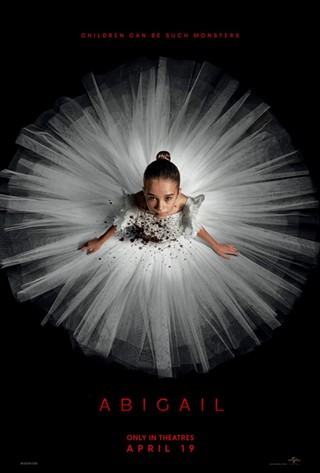Kamikaze Girls is the story of Momoko, a Japanese teenager who dresses in the currently stylish "Lolita" look, which is to say that she wears stuff that looks like it belongs on a sexed-up 19th century china doll. Momoko is convinced that the greatest era in human history was the Rococo period in France, so she wanders around in her platform shoes and frilly bonnets wishing she were all alone in a giant Fragonard painting that was hanging in the bathroom of the Louvre.
Her father is a low-level gangster who makes a killing selling "Versach" clothing to the brand-name-crazy consumerist masses. Sadly, the real Versace company gets wind of this, and he and his daughter must flee to a dank, rural area that looks nothing like the court of Louis XV.
Momoko then spends her days embroidering and having flashbacks to her birth and occasionally morphing into cartoon format in order to better explicate some aspect of her life. And then, one day, local scooter-gang member Ichigo shows up and non-consensually befriends Momoko.
Ichigo, though, is not a Lolita, but is rather a "Yanki," a Japanese teen who dresses in exaggerated versions of American rock fashions from the '50s. Well, not so much from the actual '50s as from a Japanized version of the '80s version of the '50s, which most people agree was the best version of the '50s, even though the '60s version had Sha Na Na, and the '70s version had the Fonz.
While Momoko practices a wide-eyed and blank expression that matches her parasol and petticoats, Ichigo spits on the ground and demands that the two of them go on a quest to find the world's greatest embroiderer. This leads them into conflict with a legendary motorcycle gang, the head designer for the actual "Baby the Stars Shine Bright" clothing store (which pretty much invented the Lolita look), and each other.
It's a very strange tale of friendship, since Momoko wants nothing more in the world than to be left completely alone, but with enough money that she never has to work or do anything but look pretty. Ichigo, on the other hand, wants the love of "the Unicorn," a man whose pompadour extends so far out in front of him that it looks like a metaphor for Scott McClellan's nose. Still, she can't stop harassing Momoko, because even more than love, she wants a friend. A friend in impractical, frilly clothes.
It's hard to say if this is a good movie or a bad movie, since it's so unlike any movie that's likely to appear in American theaters. And it's certainly not unlike American movies in being arty: Rather, and almost unbelievably, it's too pop to be American. In fact, it's so pop that it's art, but without falling into the trap of becoming Pop Art.
While it may seem to the astute observer that the world's pop culture is largely produced in the United States by a select group of designers living in a radiation shelter in Anaheim, it is, in fact, the case that various indigenous cultures outside of Southern California produce their own pop. But for the most part, these fail miserably, because they're just lame imitations of American pop.
Not so with Japan: Its pop is an awesome imitation of American pop, tuned up to a high C and sprinkled with an array of colors that are so overwhelming and acidic that they make Stevie Wonder's eyes hurt. And Kamikaze Girls perfectly captures the high weirdness of what the kids call "jpop," that healthy mixture of Hello Kitty, Power Rangers and a culture that demands suicide for jaywalking.
Like the best pop culture, Kamikaze Girls is dazzlingly visual, deeply superficial and not entirely comprehensible. But it has a daring shallowness that American pop, with its deep roots in Protestantism, Frank Capra and Creationism can't quite flatten itself enough to meet.
This doesn't make it a good movie: Judged by standard movie criteria, it's a terrible movie. But that's like judging porn on the standards of minimalist poetry. Kamikaze Girls is up to something entirely other than the presentation of a good movie. It's trying to be pure pop, and in that, its fantastically and horribly successful.













